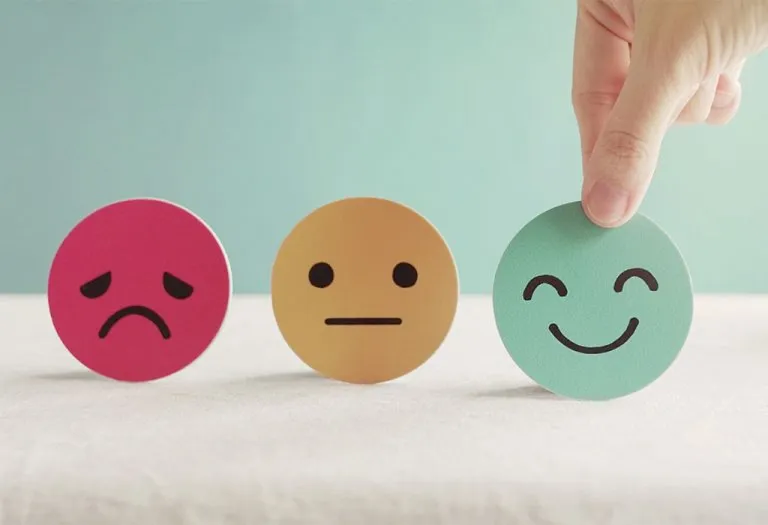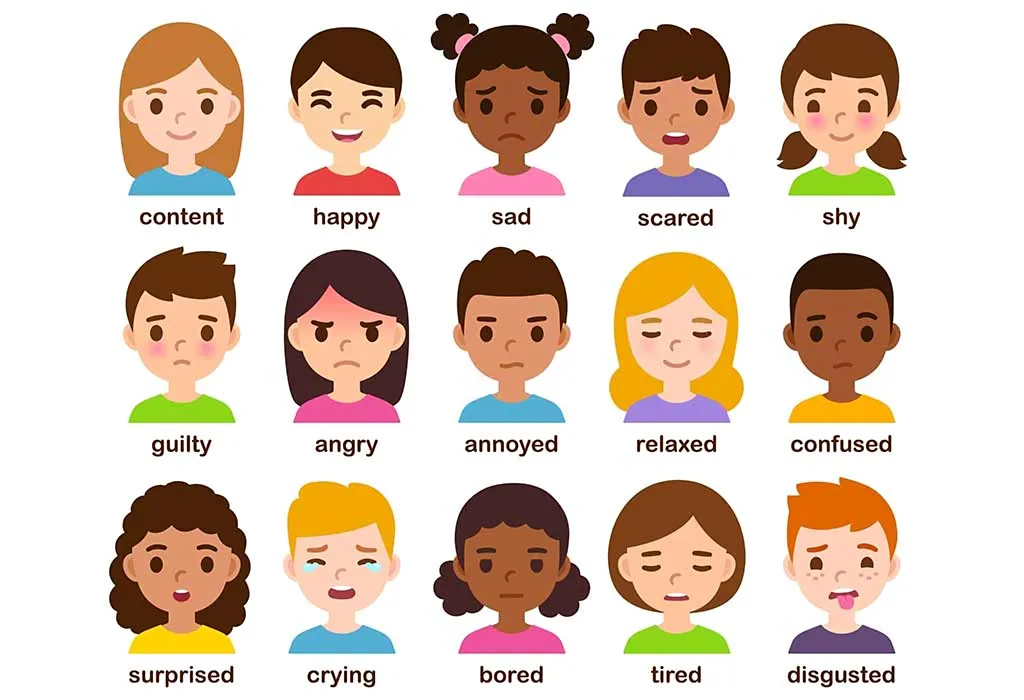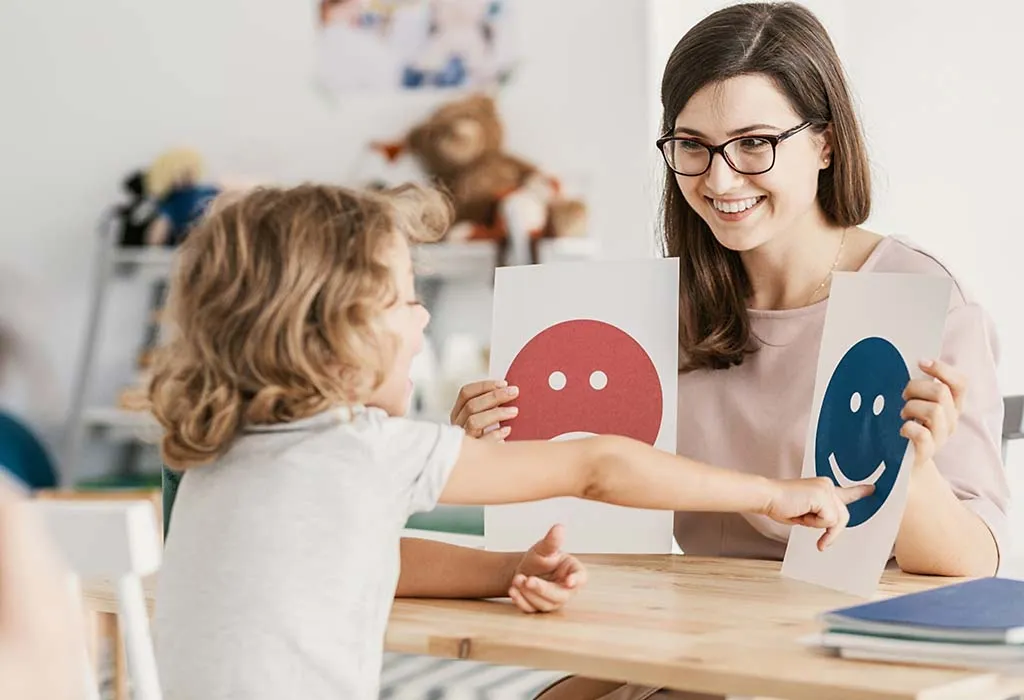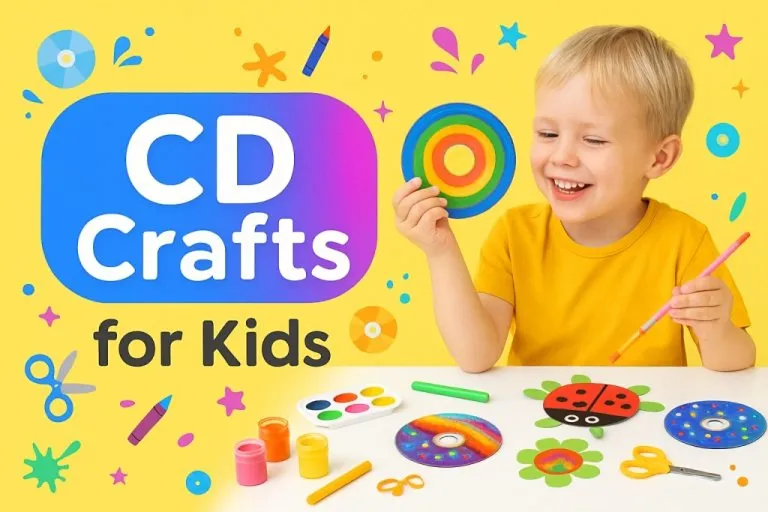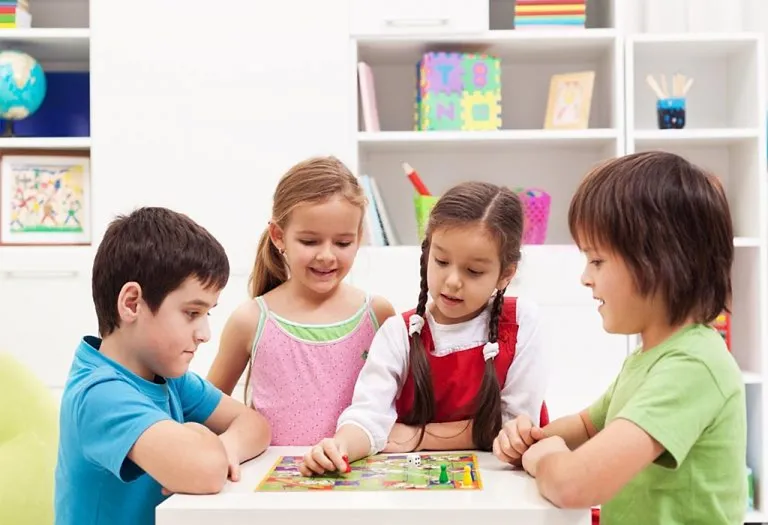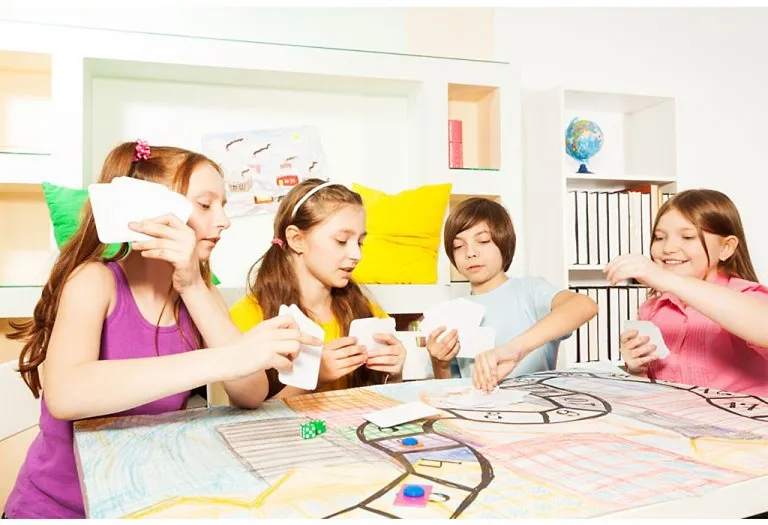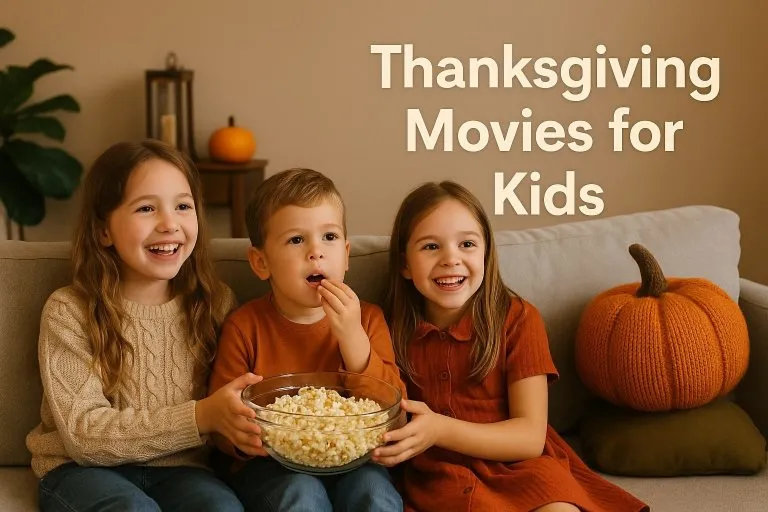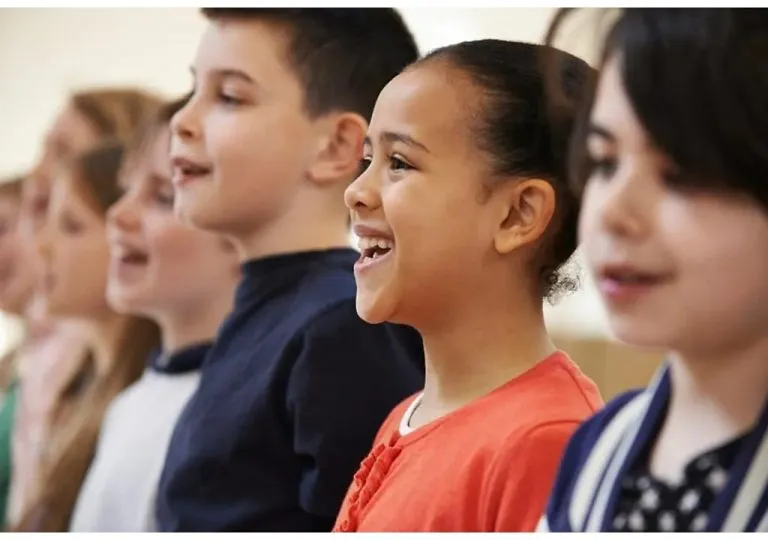Simple Feelings Chart for Kids to Understand Emotions
Understanding emotions can be difficult for anyone, but it’s especially challenging for young kids. A child may feel overwhelmed, frustrated, or even sad and not even know why they feel this way. This is where a feelings chart for kids becomes super useful. But what exactly is it? Well, think of it as a visual tool that helps children recognize and label their emotions more easily. Imagine trying to express yourself without knowing the right words—this is how many kids feel!
So, a simple feelings chart is like an emotional vocabulary list for kids. It helps them understand different emotions such as happiness, sadness, anger, fear, and more. With bright colors, expressive faces, and relatable descriptions, a feelings chart makes it easier for kids to connect their feelings to words and images. A feelings chart is a tool for kids and teachers and parents can also use it to foster better communication and empathy in children.
Now, let’s explore why feelings charts are important and how you can make the most of them.
What Is a Feelings Chart?
A feelings chart is a simple visual tool that displays different emotions through images, words, or both. It helps kids recognize their own feelings and express them better. It is similar to a mood chart for kids, and it often uses facial expressions and bright colors to represent different moods, making it easy and fun to use.
Whether it’s a happy face, a sad face, or an angry face, these visuals help kids match what they’re feeling inside with what they see on the chart. Some charts are very basic, showing only a few emotions, while others can be more detailed, covering a wide range of feelings. It’s a great way for kids to learn that emotions are normal and manageable.
How Does a Feelings Chart Work?
A feelings chart works by giving kids visual cues to identify their emotions. It usually has pictures of faces showing different feelings, like happy, sad, or surprised, along with simple labels. Kids can look at the chart, find the face or word that matches their mood, and point to it or say it out loud.
Benefits of Using a Feelings Chart for Kids
Using a feelings chart offers several advantages for children. It’s not just about recognizing emotions but also about building healthy communication habits. Below are some key benefits of using a feelings chart for kids:
- Helps Identify Emotions: Kids learn to identify and label different emotions like happiness, sadness, anger, or fear.
- Improves Emotional Vocabulary: Expands the range of emotions a child can express using the right words.
- Encourages Positive Communication: When kids know what they’re feeling, they can talk about it more openly.
- Supports Mental Health: Helps in reducing anxiety by making emotions less confusing and easier to handle.
- Promotes Problem-Solving Skills: When kids know their emotions, they can find solutions to manage them better.
- Builds Empathy: Understanding their own emotions helps kids relate to what others might be feeling too.
List of Feelings & Emotions That Children Should Know
Children need to know a variety of feelings to better express themselves. A good emotions list for kids includes both basic and complex emotions. Below is a table with common feelings and their descriptions to help kids understand what they mean:
|
Loving |
Courageous |
|
Happy |
Aggressive |
|
Sad |
Hurt |
|
Angry |
Guilty |
|
Excited |
Stressed |
|
Scared |
Anxious |
|
Surprised |
Playful |
|
Confused |
Jealous |
|
Proud |
Embarrassed |
|
Lonely |
Shocked |
|
Frustrated |
Worried |
|
Hopeful |
Confident |
|
Shy |
Disappointed |
Best Printable Feelings Charts for Kids
A printable feelings chart is a handy tool that parents and teachers can use at home or in the classroom. It’s easy to access, print, and use anytime. With a children’s emotion chart, kids can visually identify and express their emotions in a fun and interactive way. Here are some popular printable charts you can consider:
Feelings Chart for Toddlers and Preschoolers
For toddlers and preschoolers, a feelings chart should be very simple and engaging. At this age, kids respond well to visuals with big, colorful images and basic emotions. A chart with just a few emotions is ideal, as it helps them learn without feeling overwhelmed. Below is a sample chart for young children:
|
Emotion |
Face Description |
|
Happy 😊 |
Big smile, eyes open wide |
|
Sad 😢 |
Frown, teardrop by the eye |
|
Angry 😡 |
Eyebrows down, mouth curved, face red |
|
Surprised 😲 |
Wide eyes, open mouth, eyebrows raised |
|
Scared 😨 |
Open mouth, wide eyes, hands on cheeks |
|
Tired 😴 |
Droopy eyes, closed mouth, head tilted |
Feeling Chart for Older Kids
For older kids, a feelings chart can include a broader range of emotions, as they can understand more complex feelings. A more detailed children’s emotion chart helps them express themselves better and learn to manage their emotions. Below is a sample chart that includes some advanced emotions for older kids:
|
Emotion |
Description |
|
Happy 😊 |
Feeling joy, excitement, or satisfaction |
|
Sad 😢 |
Feeling down, disappointed, or hurt |
|
Angry 😡 |
Feeling mad, frustrated, or irritated |
|
Confused 🤔 |
Feeling unsure, puzzled, or unclear about something |
|
Anxious 😟 |
Feeling nervous, uneasy, or worried |
|
Bored 😐 |
Feeling uninterested or tired of doing the same thing |
|
Proud 😌 |
Feeling accomplished or pleased with oneself for achieving something |
|
Embarrassed 😳 |
Feeling awkward or uncomfortable about something you did or said |
|
Jealous 😒 |
Feeling envious of someone else’s success or possessions |
|
Calm 😌 |
Feeling relaxed, peaceful, and at ease |
Feelings Chart Worksheets for Kids
Worksheets are a great way to make learning about emotions interactive and fun. A kids feelings chart worksheet can include activities like matching emotions to faces or drawing how they feel. Below are two simple worksheets for kids:
Worksheet 1: Match the Emotion
This worksheet shows different faces with varying expressions and a list of emotion words. Kids can draw a line connecting each face to the correct emotion word.
|
Face |
Emotion Words |
|
😀 (Smile) |
Happy |
|
😢 (Tear Drop) |
Sad |
|
😡 (Red Face) |
Angry |
|
😲 (Wide Eyes) |
Surprised |
|
😟 (Nervous) |
Anxious |
|
😐 (Straight Face) |
Bored |
Worksheet 2: Draw Your Feelings
This worksheet encourages kids to draw how they are feeling today. There is a blank face outline where kids can add their own expressions. Below it, there’s a prompt:
“Today I feel ___________ because ___________.”
These worksheets help children engage with the kids feelings chart in a hands-on way, making it easier for them to recognize and express their emotions.
Helpful Tips for Using a Feelings Chart at Home
Using an emotions chart for kids at home can be a great way to support your child’s emotional development. With a little guidance, this tool can become part of their daily routine, making it easier for them to express and understand their feelings. Here are some tips to get started:
1. Keep It Visible
Place the chart in a spot where your child can see it often, like on the fridge or in their bedroom. This makes it easy for them to refer to the chart whenever needed.
2. Use It Daily
Encourage your child to use the chart every day. Ask them how they’re feeling in the morning or after school. This helps them get used to talking about their emotions.
3. Be a Role Model
Show your child how to use the chart by using it yourself. Point out your own emotions and place them on the chart. This will help your child see that emotions are normal for everyone.
4. Connect Emotions to Situations
When your child points to a feeling, ask what made them feel that way. This helps connect emotions to events and teaches them how to explain their experiences.
5. Make It Fun
Turn using the chart into a game or activity. Ask your child to act out a feeling on the chart or draw a face that matches their current mood.
6. Update the Chart as They Grow
As your child learns more about their emotions, update the chart to include new feelings. This keeps the emotions chart for kids relevant and engaging as they get older.
FAQs
1. How do I introduce a feelings chart to my child?
Start by explaining that everyone has emotions and it’s okay to feel different things. Show them the chart and go through each emotion together. Encourage them to point to a face that matches how they’re feeling and talk about why they feel that way.
2. What age is best to start using a feelings chart?
Feelings charts can be introduced as early as age 2 or 3 when kids begin to recognize basic emotions. For younger kids, use simple charts with just a few emotions, and as they grow, add more complex feelings.
3. Can a feelings chart help with tantrums?
Yes, using a feelings chart can reduce tantrums by helping children express their emotions before they get overwhelmed. When kids learn to identify what they’re feeling, they are less likely to act out in frustration.
A feelings chart is a simple but powerful tool that helps kids understand and express their emotions. This fosters emotional development, better communication, and healthier relationships. Whether at home or in school, using a feelings chart will help children be in a better position to discuss feelings they are experiencing. The ability to name their emotions empowers children with means they can utilize in the management of their emotions positively. Use a simple emotion and add more complex ones as maturity progresses. Keep it visible and use it daily to make it part of their routine. With time, kids will learn that all feelings are normal and it’s okay to express them.
Also Read:
How to Make Household Chore Chart for Kids
How to Use Behaviour Charts for Children
Bedtime Chart for Kids
Was This Article Helpful?
Parenting is a huge responsibility, for you as a caregiver, but also for us as a parenting content platform. We understand that and take our responsibility of creating credible content seriously. FirstCry Parenting articles are written and published only after extensive research using factually sound references to deliver quality content that is accurate, validated by experts, and completely reliable. To understand how we go about creating content that is credible, read our editorial policy here.





